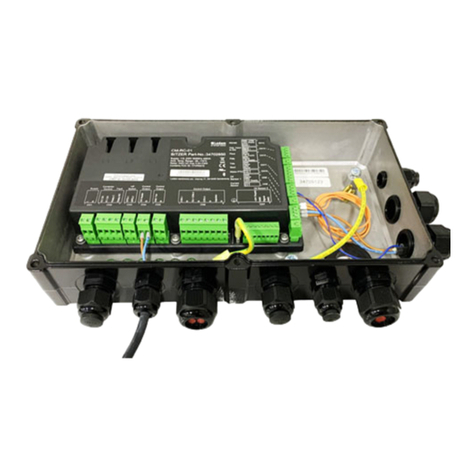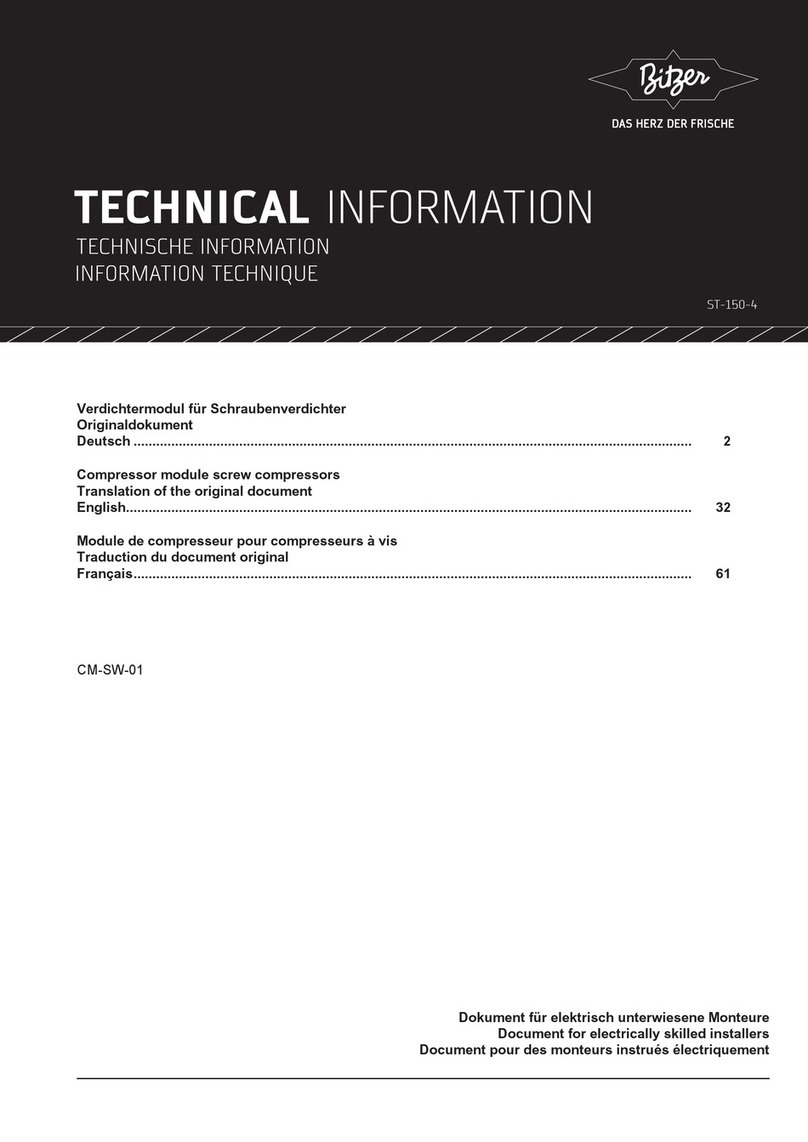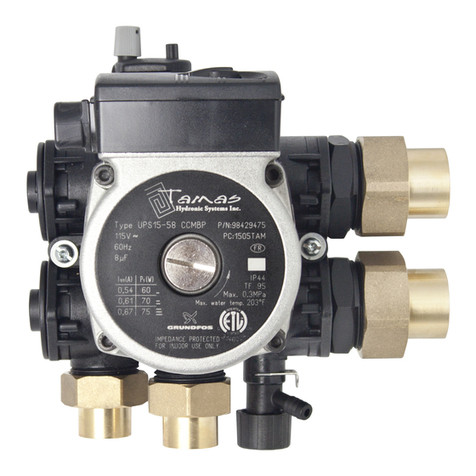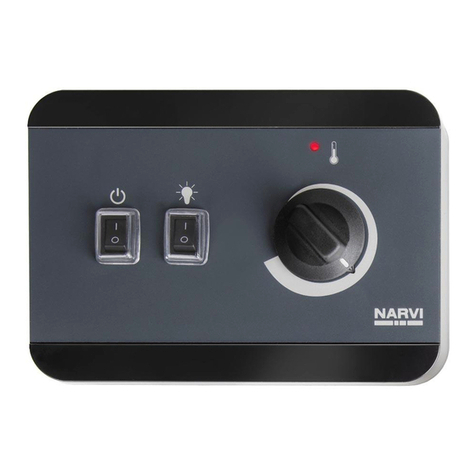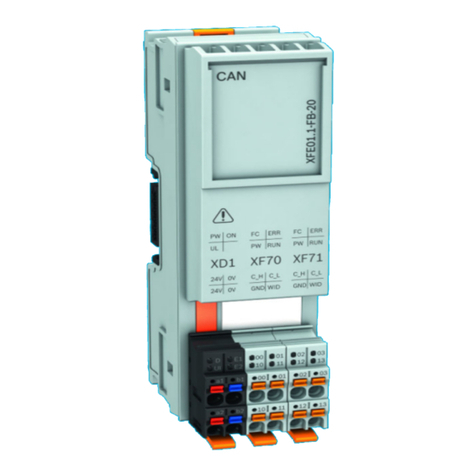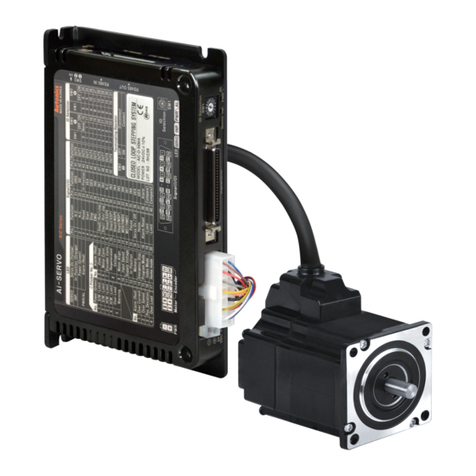Bitzer CM-SW-01 User manual

Compressor control module for the OSKA95103-K compressor
Original document
Preliminary v 1.0C
CM-SW-01
Electrical skilled installer

2 SG-150-1
Table of contents
1. Read this first! 4
1.1 Reference guide 5
1.2 Safety 5
2. Definitions 6
3. Functions 7
3.1 Control functions 7
3.2 Monitoring and diagnosis 7
3.2.1 Motor temperature 7
3.2.2 Discharge temperature 8
3.2.3 Oil supply 8
3.2.4 Short-cycling warning 8
3.2.5 Application limits 9
4. Datalog 11
4.1.1 Alarms 11
4.1.2 Events 11
4.1.3 Datalog information 11
4.1.4 Periodic data 11
4.1.5 Statistics and counters 12
4.1.6 Accumulated operation counters 12
4.1.7 Capacity load 12
4.1.8 Daily counters 12
4.1.9 Runtime statistic 12
4.1.10 Compressor start statistic 12
5. Control of the CM-SW-01 13
5.1 Commands and setpoint 13
5.1.1 Command Start 13
5.1.2 Setpoint –and speed changes 13
5.2 Enable serial control 13
5.3 Required signals to start the compressor 14
5.3.1 Digital and analogue signals 14
5.3.2 Serial control (Modbus) 14
5.4 Control Word bit definitions 14
5.4.1 Data valid bit 14
5.5 Examples of Serial Control Word setups: 15
5.6 Status Word bit definitions 15
5.7 Setting the serial setpoint 16
5.8 Serial Control Timeout Function 16
6. I/O List for CM-SW-01 17
7. Drawings 19
8. Standards 20
9. Alarm system 21
9.1 Alarm severity types 21
9.2 Fault reset types 21
9.3 Alarm list 22
10. Programming and monitoring 26
10.1Introduction 26
10.2Serial communication 26
10.2.1 Modbus (RTU) configuration 26
10.2.2 Data values, scaling and data types 27
10.2.3 Reading and writing 32 bit values via Modbus 27
10.2.4 Modbus function codes 27
10.2.5 Modbus exception codes 27
10.3Parameters 28
10.3.1 Control –application 28
10.4Status data 29
10.4.1 Status –alarm 29

SG-150-1 3
10.4.2 Status –compressor 32
10.4.3 Status –motor 34
10.4.4 Status –device 34
10.4.5 Status –IO 35
10.5Configuration data 35
10.5.1 Configuration –application 35
10.5.2 Configuration –compressor 36
10.5.3 Configuration –COM1 36
10.5.4 Logs –application 37
10.5.5 Info –compressor type 37
11. Trouble shooting 38
11.1Communications trouble shooting 38
11.2Status LEDs 39
11.3LED flashing patterns of the three operation status LEDs 40

4 SG-150-1
1. Read this first!
The contents of this manual are subject to change without further notice.
Lodam electronics holds the copyright to this reference guide. The user shall follow any instructions given in
this reference guide entirely and not only partly. Any non-following of this reference guide result in exclusion
of all warranties, guarantees, and liabilities.
Copyright© 2016 by Lodam electronics a/s. All Rights Reserved.
Disposing of the parts of the CM-SW-01:
INFORMATION FOR USERS ON THE CORRECT HANDLING OF WASTE
ELECTRICAL AND ELECTRONIC EQUIPMENT (WEEE)
In reference to European Union directives and the related national legislation, please note that:
1. WEEE cannot be disposed of as municipal waste and such waste must be collected and disposed of
separately
2. The public or private waste collection systems defined by local legislation must be used. In addition,
the equipment can be returned to the distributor at the end of its working life when buying new
equipment
3. The equipment may contain hazardous substances: the improper use or incorrect disposal of such
may have negative effects on human health and on the environment
4. The symbol (crossed-out wheeled bin) shown on the product or on the packaging and on the
instruction sheet indicates that the equipment must be disposed of separately
5. In the event of illegal disposal of electrical and electronic waste, the penalties are specified by local
waste disposal legislation.
Reading instructions
The following symbols are used to draw the reader’s attention to different warning levels.
Important information
Danger!! General danger
Danger!! High voltage. Danger of electrical current or voltage

SG-150-1 5
1.1 Reference guide
Before installation, the user should be thoroughly familiarized with this reference guide,
especially with purposes, installation and operation.
Special care should be taken when installing and connecting external equipment (PTC sensor,
high voltage etc.) and handling the modules correctly according to protection against ESD (Electro
Static Discharge).
Installation of the CM-SW-01 must be performed by authorized personnel only. All warranties
are excluded in case installation is performed by unauthorized personnel or in case the CM-
SW-01 has not been correctly installed.
1.2 Safety
The CM-SW-01 is a protection device and not a safety component according to the Machinery
Directive and cannot be used in “medical” or “life support” equipment
Before commissioning, the service technician shall ensure that personal safety requirements are
met in conformity with the Machinery Directive and local legislation based on safety estimations.
Electrical plant failures are to be immediately solved, even though no immediate danger exists;
the CM-SW-01 and motor must be without power.
Before soldering or welding on the compressor, all connections on the CM-SW-01 must be
secured against overvoltage!

6 SG-150-1
2. Definitions
BEST
BEST Software
CR
Capacity Regulation
DOL
Direct On Line (motor start)
ESD
Electro Static Discharge
FI
Frequency inverter
HP
High Pressure
HW
Hardware/electronics.
I/O
Input / Output (electrical signals in and out of a unit)
LP
Low Pressure
Modbus
Application-layer messaging protocol - http://www.modbus.org/specs.php
NC
Normally Closed (relay)
NO
Normally Open (relay)
NTC
Negative Temperature Coefficient (sensor element)
PTC
Positive Temperature Coefficient (sensor element)
PW
Part winding (motor start)
Y/∆
Star/delta (motor start)

SG-150-1 7
3. Functions
The CM-SW-01 compressor module has a number of built-in functions to protect, diagnose, control and
communicate the status of the OS.KA95 screw compressor.
3.1 Control functions
Via the BEST Software, the CM-SW-01 can be configured to take care of control functions.
The CM-SW-01 thereby secures the safe operation of the OS.KA95 screw compressor.
3.2 Monitoring and diagnosis
3.2.1 Motor temperature
One of the functions of the CM-SW-01 is to protect the compressor motor against overload.
By monitoring the resistance in a PTC sensor mounted in the motor windings, the CM-SW-01 will lockout
and stop the motor if the resistance increases above the limit as shown below.
When the lockout has been activated, the two start relays K1 and K2 are released immediately to stop the
compressor.
There is a restart blocking function to prevent the motor from being started too soon after having been
overheated.
If the CM-SW-01 is locked, an external reset must be performed by either powering off the device for
minimum 5 seconds or sending a reset command on the serial bus.
When power is turned on to the CM-SW-01 module, the PTC resistance is measured:
If PTC resistance is below the reset limit 2,9 kΩ:
No alarm: The relays are energized immediately (if no other faults are present)
If PTC resistance is between 2,9 kΩ and 11,4 kΩ:
Alarm: The relays are first energized when below 2,9 kΩ
(compressor motor has cooled down)
If PTC resistance is above 11,4 kΩ:
Alarm lock: The relays are not energized and the module is locked
Alarm
Fault
Clear
2,9 kΩ ±20%11,4 kΩ±20%
Fault
Relay open
RPTC
Relay closed

8 SG-150-1
3.2.2 Discharge temperature
A temperature sensor is mounted on the discharge side of the compressor; the CM-SW-01 will open the
relays and break the safety chain if the discharge temperature threshold is exceeded.
3.2.3 Oil supply
The oil supply monitor is configured for oil level (OLC-D1) monitoring. Actual status is always accessible via
Modbus.
If an oil level fault is detected, the status is immediately updated via Modbus. However, the first 90 seconds
after compressor start, the fault signal is not activated. If the oil level is still too low, the CM-SW-01 releases
the fault relay and locks out immediately.
The OLC-D1 module (24 V version) must be used for the oil level detection.
A warning signal is set immediately if the compressor is running and the OLC input is open.
The oil fault alarm must be externally reset by either powering off the device for minimum 5 seconds or
sending a reset command on the serial bus.
3.2.4 Short-cycling warning
To protect the motor windings, the module will give a warning if the compressor is started too many times
within 1 hour, but the compressor will not be locked.

SG-150-1 9
3.2.5 Application limits
The application limits function monitors if the operating conditions of the compressor is within the safe
operation area limits –as shown in the BITZER Software when doing compressor calculations.
The BITZER Software can be downloaded from BITZER’s homepage, www.bitzer.de.
The operating point is determined by the saturated suction and discharge gas temperatures, which are
calculated from the suction and discharge gas pressure based on the selected refrigerant.
The figure below shows the multi-level monitoring of the application limits and behaviour when a limit is
reached.
Active warning, critical and faults are set inactive when the operating point again is within the reset-limit.
HP cut-out and LP cut-out are configured
in the BEST Software.
Application limit
Warning reset
Warning limit
Critical limit (shut off after 30s)
Fault limit (Immediately shut-off)
High- and Low pressure cut-out
}Active 120 s after
compressor start
Evaporating temperature to(SST) [°C]
Condensing temperature tc(SDT) [°C]
HP cut-out
LP cut-out
Fault limit, direct shut-off:
The compressor will stop immediately if this
limit is reached!
Envelope status = 6 Fault
Critical limit, shut-off after 30 s:
30s delay time to bring compressor back
inside application envelope else the
compressor is stopped with a Fault alarm
Critical (30s period starts)
Envelope status = 5 Critical
Warning limit:
Warning to system controller
No further actions
Envelope status = 4 Warning
Warning reset

10 SG-150-1
There are nine zones in the application limit as shown on the figure below.
Zone zero (the green-shaded area) is the normal, safe operation area within the application limits.
A warning and a fault will be given if the warning level or fault level is reached.
Please also see envelope faults ‘30-*’ in section 9 Alarm system.
After a stop due to fault limit, the fault can be reset when the compressor is stopped. If timed resets are
enabled, the CM-SW-01 will perform a timed reset otherwise an external reset is required. The CM-SW-01
will start the compressor again if the start command is active or when it is applied again.
Please observe:
There is no Application limits monitoring the first period after start of the compressor.
The period varies for the compressor type, can be up to 120 s.
Envelope status = 2–Start up
Section 10.4.2 Status –compressor lists two parameters that relate to the application envelope:
Envelope Status lists the status of the compressor and if there should be warnings related to the
envelope:
Envelope status 4–warning means the operating point of the compressor is between the warning
limit and the critical limit.
Envelope status 5–critical means the operating point of the compressor is between the critical limit
and the fault limit and is only allowed to be there for 30 seconds from this warning became active.
Envelope status 6–fault means the compressor is stopped since the operating point of the
compressor has been outside the critical limit for more than 30 seconds or has exceeded the fault
limit
Envelope Zone shows in which zone the compressors operating point is right now or if a fault is
active, in which zone the operating point was when the fault was set.
The zones are listed above.
The zone is zero if the operating point is within the warning limit and no envelope faults are active.
6.SH2.SL
1.SLDL
3.SLDH 4.DH
5.SHDH
7.SHDL
8.DL
Evaporating temperature t0(SST) [°C]
Condensing temperature tc(SDT)[°C]
0: Ok
Zone number, description and alarm number:
Zone 1:SST Low, SDT Low 3001
Zone 2:SST Low 3002
Zone 3:SST Low, SDT High 3003
Zone 4:SDT High 3004
Zone 5:SST High & SDT High3005
Zone 6:SST High 3006
Zone 7:SST High & SDT Low 3007
Zone 8:SDT Low 3008
Zone 0: Normal operation within application
limit and no alarms
t0(SST) = Evaporating temperature
tc(SDT) = Condensing temperature

SG-150-1 11
4. Datalog
The built-in data logger stores operation data, sensor data, alarms and events for further analysis using the
BEST Software.
The data are stored in the data logger flash memory at regular intervals together with counters and statistics
data collected and summarized over time. The lifetime of the different data varies.
The datalog contains the following type of entries
Alarms
Events
Datalog information
Periodic data
Statistics and counters
4.1.1 Alarms
Information logged:
Timestamp
Alarm code and text
Severity, can be Fault, Critical or Warning
Set or Clear
Critical and warnings have Set and Clear entries. E.g.
23-11-2015 03:58
4301: Motor Temperature High - Warning - Set
…
23-11-2015 04:02
4301: Motor Temperature High - Warning - Clear
For faults only Set entries are found. E.g.:
07-11-2015 11:01
3431: High Pressure Switch - Fault - Set
When all faults are successfully reset and the CM-SW-01 is no longer in fault state, there is an entry like
this:
02-12-2015 10:45
0: No Fault - Fault - Clear
Lifetime of alarm entries: 365 days.
4.1.2 Events
Possible events:
Power Up
Power Down
Extern alarm reset
Compressor Start
Compressor Stop
Service tool connect
Lifetime of events: 30 days
4.1.3 Datalog information
If bad sections are found in the datalog storage during download, an event is entered, telling that this has
happened. If possible, information is added about the number of log entries that was lost.
4.1.4 Periodic data
Data are stored on a regularly basis.
10 seconds interval when the compressor is running, 60 seconds when stopped.
3 seconds interval for fault traces.
Lifetime of events: 1 –3 weeks

12 SG-150-1
4.1.5 Statistics and counters
Every midnight at 0:00 and at every Power Down a number of entries with counters or statistics are logged.
Every one of these entries has a timestamp and some specific data as described below.
4.1.6 Accumulated operation counters
All accumulated since first power up
No of PowerUps
No of Motor Starts
Operating Hours
Motor Operating Hours
Lifetime: 365 days
4.1.7 Capacity load
Device Operating Time –number of minutes, that is basis for the next values
Cap.Load 0 –percentage of the time, where the compressor was at standstill
Cap.Load 11-20 –percentage of the time, where the compressor had a load in the range 11-20 %
…
Cap.Load 91-100 –percentage of the time, where the compressor had a load in the range 91-100 %
Lifetime: 365 days
4.1.8 Daily counters
Device Power Ups
Compressor Starts
Number of Faults
Number of Criticals
Number of Warnings
Device Operating Time
Compressor Runtime
Fault Runtime
Critical Runtime
Warning Runtime
Capacity Usage Rate
Lifetime: 365 days
4.1.9 Runtime statistic
Number of runs 0-4 min
Number of runs 5-9 min
Number of runs 10-19 min
Number of runs 20-29 min
Number of runs 30-59 min
Number of runs 60-119 min
Number of runs 120-299 min
Number of runs >300 min
Lifetime: 365 days
4.1.10 Compressor start statistic
starts/h
2-4 starts/h
5-9 starts/h
10-14 starts/h
15-19 starts/h
>20 starts/h
Lifetime: 365 days

SG-150-1 13
5. Control of the CM-SW-01
Control commands and setpoint can be given to the CM-SW-01 via different interfaces
Digital inputs: Start/stop
Analogue input: Setpoint
Serial control: Commands and setpoint
The commands from the different interfaces are merged and the resulting “Control Word” can be read via
the serial Interface.
The capacity is limited between 10 % and 100 % even if the sum of the setpoints may be below 10 % or
above 100 %.
The serial protocol is Modbus (RTU). Modbus can be connected for example for monitoring only but still
using the digital and analogue inputs for control of the CM-SW-01. Most common is to monitor and control
the CM-SW-01 via the Modbus interface.
The serial control is inactive by default. Please see section 5.2 Enable serial control.
5.1 Commands and setpoint
The basic operation of the CM-SW-01 is controlled by
Commands: Start and stop
Setpoint –analogue or serial control
Setting of serial control parameters
o"Serial Control Source"; default is none: 0 –10V input
See parameter in section 10.5.1 Configuration –application
oSetting of the refrigerant (if not done via the BEST Software)
Commands and setpoint can be given via the digital and analogue inputs or by combining the digital and
analogue inputs with values from the serial interface. See later in this section.
5.1.1 Command Start
The Start command becomes active when a start signal is given via digital input or serial control.
If the compressor is started too many times per hour, the CM-SW-01 will give a waning but the compressor
will be allowed to start
The capacity of the compressor will normally match the setpoint. Details are described below.
When the motor is running and the start condition is removed (Start is set to inactive), the compressor is
stopped.
5.1.2 Setpoint –and speed changes
The setpoint is a value in the range -100 % to +100 %. There is no ramping of a capacity change request.
The setpoint from the analogue input and the serial control are added. E.g. the analogue signal could be an
offset and the serial control could be the fine tuning.
Analogue control: Apply a 0 –10V capacity signal (0 –100%) to the CN13 Cap. Input.
Serial control: Set the capacity request in parameter Serial Setpoint (-100 % –+100%)
Please see section 10.3.1 Control –application for the parameter to use for the setpoint.
5.2 Enable serial control
The serial control is inactive by default.
To enable the serial control set the parameter to 1 (COM1 Modbus).
To disable serial control:
Set parameter “Serial Control Source” to 0 (= None).

14 SG-150-1
5.3 Required signals to start the compressor
Min. signals required to start the compressor via the CM-SW-01
5.3.1 Digital and analogue signals
Serial Control Source = 0 (None)
Start command
CN2:Relay C
Setpoint
CN13:Cap. Input
Compressor
State
–
–
Stopped
Off
–
Stopped
On
0 –100%
Running
Note: Please observe max number of starts per hour
5.3.2 Serial control (Modbus)
Serial Control Source = 1 (Modbus)
Start command
Control Word
Setpoint
Serial Setpoint
Compressor
state
–
–
Stopped
Off
–
Stopped
On
±100 %
Running
Note: Please observe max number of starts per hour
Control commands can be given to the CM-SW-01 via the Serial Control Word. The bit definitions are shown
in the table below.
The protocol used is Modbus (RTU). Modbus register definitions are listed in section 10.3
Parameters.
5.4 Control Word bit definitions
Bit
Function
Description
0-2
Reserved
Must be set to 1
3
Operation enable
Enable operation (0=off, 1 = enabled)
4
Reserved
Must be set to 1
5
Reserved
Must be set to 1
6
Start
Start command is active when bit = 1
7
Reset
Reset alarm command is active when bit is set from 0 to 1.
Positive edge triggered.
8-9
Reserved
10
Data valid
Instruct controller to accept control word. Otherwise all other bits
are ignored.
The resulting control word will always have this set.
Please see section 10.3.1 Control –application
11-15
Reserved
The data valid bit must be set to update the serial control word and the serial setpoint.
The Control Word is the active control word.
Use the Serial Control Word for configuration of the CM-SW-01.
5.4.1 Data valid bit
When the data valid bit is set to “1” setpoint and commands are accepted from the serial control interface.
When the data valid bit is set to “0” all other bits in the control word and the setpoint are ignored. This
means that if the start command was active just before the data valid bit is set to “0” the command remains
active until the data valid bit is set to “1” and the start bit is set to “0”.
Please note that the Serial Control Source must be 1 (Modbus).

SG-150-1 15
5.5 Examples of Serial Control Word setups:
Command
Hexadecimal
value
Decimal
value
Binary
Reserved
Data valid
Reserved
Reset
Start
Reserved
Operation
enable
Reserved
No command
43F
1087
0000 0
1
00
0
0
11
1
111
Start
47F
1151
0000 0
1
00
0
1
11
1
111
Reset
4BF
1215
0000 0
1
00
1
0
11
1
111
Stop
437
1079
0000 0
1
00
0
0
11
0
111
‘No command’ is the neutral value allowing digital control.
The neutral value of the control word is 43F hex (= 1087 dec = 10000111111 binary)
To start the compressor, the control word must be 47F hex (= 1151 dec = 10001111111 binary)
To disable this interface: Please see section 10.5.1 Configuration –application.
In the status word the actual status of the CM-SW-01 can be seen.
5.6 Status Word bit definitions
CM-SW-01 Status Word
Bit
Function
Description
0
Control
ready
The control is ready to switch on
0: Control not operational
1: The control is ready for operation
1
Operation ready
The CM-SW-01 is ready to operate
0: Output is not ready
1: Output is ready
2
Operation enabled
0: Output is off. Compressor is stopped
1: Compressor is on
3
Fault
0: No fault present
1: A fault is present. The compressor is stopped
4
Reserved
5
Reserved
6
Start disabled
0: Start is enabled.
1: Start is disabled
7
Warning
0: No warning present
1: A warning is present. The CM-SW-01 continues operation, but
attention may be required
8
On reference
0: The compressor is ramping or not running
1: The compressor is operating at setpoint
9
Reserved
10
Reserved
11
Running
0: Compressor is not running
1: The compressor is running
12
Start active
0: Start command is not given OR start is prohibited
1: Start command is given (e.g. start signal is given, setpoint > 0 %) and
Operation is enabled
13
Critical
0: No critical present
1: A critical is present. The CM-SW-01 is close at its limits and may
soon stop the compressor
14-15
Reserved

16 SG-150-1
5.7 Setting the serial setpoint
The serial setpoint is set via the Modbus holding register 111:
Name
Possible
values
Default
Description
Modbus
type & addr
Serial Setpoint
(Control.SerSetpoint)
-100.00 % -
100.00 %
scale 100
sint16
0 %
Capacity setpoint written by serial
communication
HR 111
5.8 Serial Control Timeout Function
If the communication is interrupted, the CM-SW-01 can be configured for different reactions to this interrupt
None –continue operation
Stop –stop operation
Fault –Stop and signal fault alarm
Default function is to let the CM-SW-01 continue without any changes (None).
The timeout for activation and the different reactions of the Serial Control Timeout Function can be adjusted.
Every update of the Serial control word resets the timeout function.
Default timeout is 60 seconds.
Please see section 10.5.1 Configuration –application for further information.

SG-150-1 17
6. I/O List for CM-SW-01
Connector
Name
Type/
Function
Logic
Description
Supply
CN1
L
N
Supply
-
Supply for CM-SW-01 and control outputs;
115 V-230 V; +10% ~ -15%, 50/60 Hz; max 500 VA
with external components
Fuse 8A T @115VAC; 4A T@230VAC
Contactor
Control
CN2
K1 Ctrl
Motor
Start
NO
Activate K1 contactor
115 V-230 V; +10% ~ -15%, 50/60 Hz; max 2,5A;
C300 max 100.000 cycles; D300 max 350.000
cycles
K2 Ctrl
Motor
Start
NO
Activate K2 contactor
115 V-230 V; +10% ~ -15%, 50/60 Hz; max 2,5A;
C300 max 100.000 cycles; D300 max 350.000
cycles
Relay C
Input
NO
Compressor run signal
115 V-230 V; +10% ~ -15%, 50/60 Hz
Fault
CN2
Relay NC
Input
NC
Fault relay;
115 V-230 V; +10% ~ -15%, 50/60 Hz; max 2,5A;
C300 max 100.000 cycles
HP Switch
CN3
HPS-1
HPS-2
Output
Input
NO
115 V-230 V; +10% ~ -15%, 50/60 Hz; max 2,5A;
115 V-230 V; +10% ~ -15%, 50/60 Hz
Control
output
CN4
Control 1
N
Output
Neutral
NO
Future use
115 V-230 V; +10% ~ -15%, 50/60 Hz; max 2A(1)
Control
Output
CN5
Control 2
N
Output
Neutral
NO
Additional fan
115 V-230 V; +10% ~ -15%, 50/60 Hz; max 2A(1)
Control
Output
CN6
CR+
N
Output
Neutral
NO
CR+ slider valve
115 V-230 V; +10% ~ -15%, 50/60 Hz; max 2A(1)
CR-
N
Output
Neutral
NO
CR- slider valve
115 V-230 V; +10% ~ -15%, 50/60 Hz; max 2A(1)
Vi+
N
Output
Neutral
NO
Vi+ slider valve
115 V-230 V; +10% ~ -15%, 50/60 Hz; max 2A(1)
Vi-
N
Output
Neutral
NO
Vi- slider valve
115 V-230 V; +10% ~ -15%, 50/60 Hz; max 2A(1)
Slider
pos.
Sensor
CN7
INIT-
INIT+
Start/stop-
Start/stop+
+24V supply
GND
Supply
Ground
Serial
Slider position sensor
RS422 interface
+24 VDC ±10%; max 100 mA
0 V ground
Oil Sensor
1
CN9
+24V Supply
GND
Signal
GND
Supply
Ground
Input
Ground
NO
+24 VDC ±10%; max 100 mA
0 V ground
Oil level signal. Sourcing to ground; max 24 VDC;
max 20 mA
0V ground for Signal
Motor PTC
CN10
PTC-1
PTC-2
Signal
Signal
Temperature
Temperature
Motor temperature
0 –50 kΩ; PTC sensor according to DIN
44081/44082
1 –9 in series. Max. total resistance: < 1,8 kΩ
Short circuit fault detection implemented
Rtrig: 11,4 kΩ ±20%
Rreset: 2,9 kΩ ±20%
Taux
CN11
Tdis
Signal
GND
Input
Ground
Temperature
Auxiliary temperature.
PT1000 sensor; -40°C ~ +100°C; accuracy: ±2°C
0V
Signal
Input
Temperature
Discharge temperature.

18 SG-150-1
Connector
Name
Type/
Function
Logic
Description
CN11
GND
Ground
PT1000 sensor; 0°C ~ +200°C; accuracy: ±2°C
0V
Pdis
CN12
Psuc
CN12
+5V Supply
Signal
GND
Supply
Input
Ground
Pressure
Discharge pressure. Sensata 2CP5-71-47 (rel) or
equivalent
+5 VDC; max 10 mA
1 - 35 bar abs.; 0 - 5V ratio metric; accuracy ±1%
F.S.
0V
+5V Supply
Signal
GND
Supply
Input
Ground
Pressure
Suction pressure. Sensata 2CP5-71-49 (abs) or
equivalent
+5 VDC; max 10 mA
0 - 13 bar abs.; 0 - 5V ratio metric; accuracy ±1%
F.S.
0V
Cap. Input
0-10V
CN13
Input
GND
Input
Ground
Capacity
0 –100 % capacity; 0 –10 V input; Rin 39 kΩ;
accuracy ±2%
0V for Capacity input only; 100 Ω safety Rin
RS485
CN14
DATA+
DATA-
Supply In
GND
RS485
RS485
Supply
Ground
Serial
Serial
Optional
Ground
Modbus (RTU) serial communication; DATA+
Modbus (RTU) serial communication; DATA-
Optional 24 VDC supply
Ground for serial communication
Note (1): Max 500 VA total for the 6 control outputs.

SG-150-1 19
7. Drawings
Mounting is inside a new element for the terminal box. Size of the element depends on the compressor
model.

20 SG-150-1
8. Standards
The CM-SW-01 is manufactured according to the following standards
2011/65/EU RoHS
2014/35/EC Low voltage directive
2014/30/EC EMC directive
The following standards have been used
EN 61010-1:2010 Safety requirement for electrical equipment for measurement and control
EN 61000-6-2:2005 Generic EMC Immunity for industrial environment
EN 61000-6-3:2007 Generic EMC Emission for residential, commercial and light-industrial environments
Other manuals for CM-SW-01
2
Table of contents
Other Bitzer Control Unit manuals
Popular Control Unit manuals by other brands
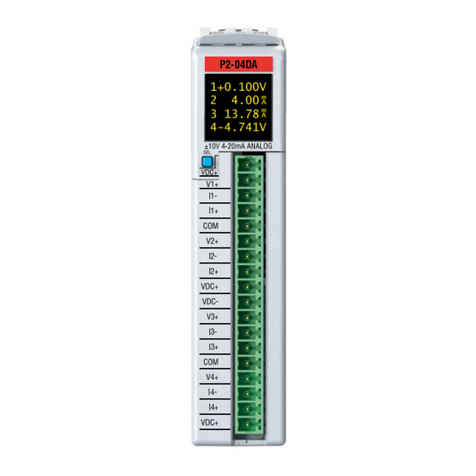
Automationdirect.com
Automationdirect.com Productivity 2000 P2-04DA manual

VAT
VAT 613 Series Installation, operating, & maintenance instructions
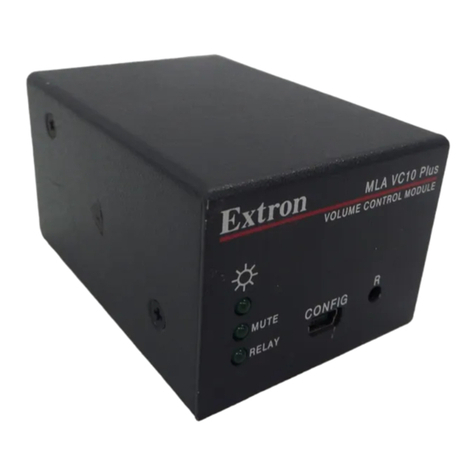
Extron electronics
Extron electronics MLA VC10 Plus Setup guide

AzureWave
AzureWave AW-CB511NF user guide
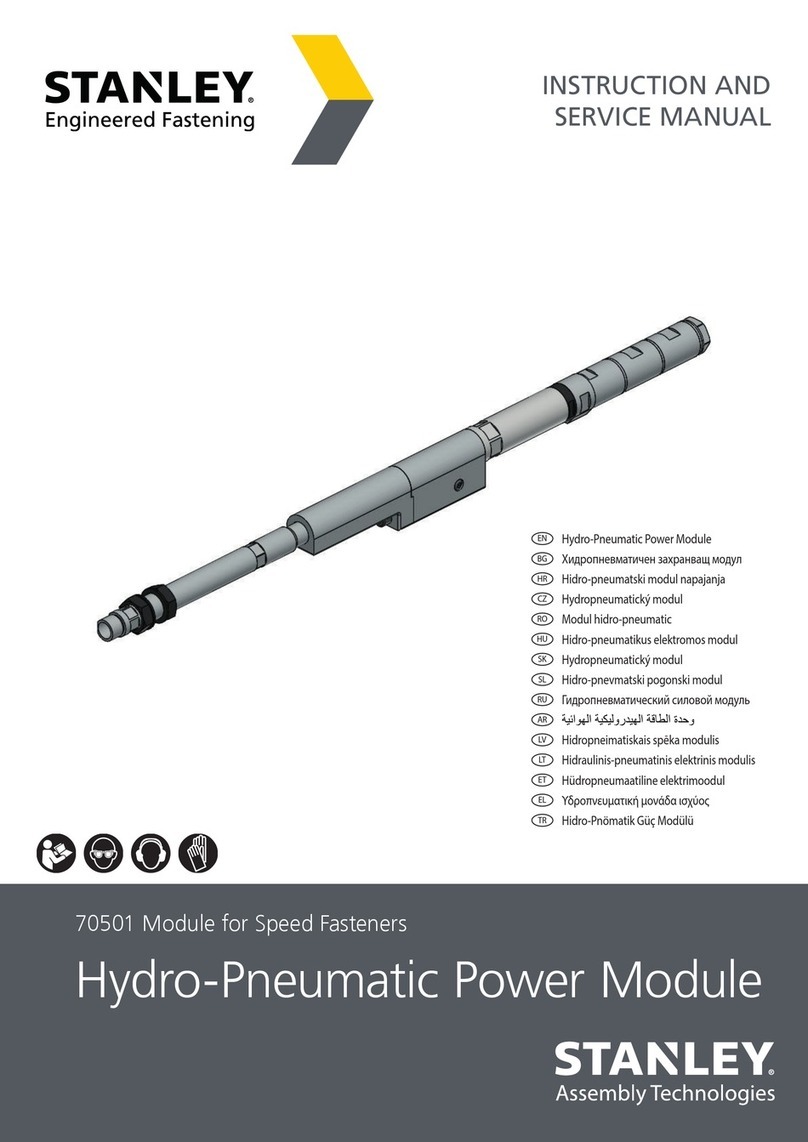
Stanley
Stanley 70501 Instruction and service manual
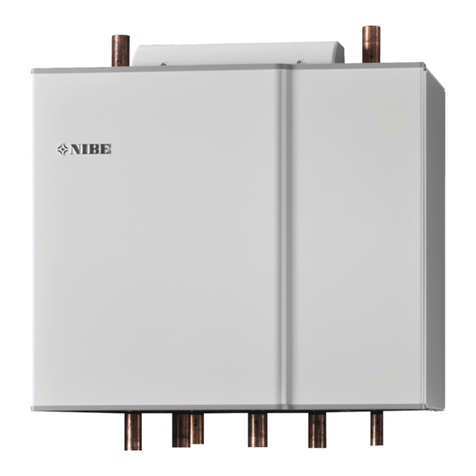
Nibe
Nibe HPAC 40 Installer manual
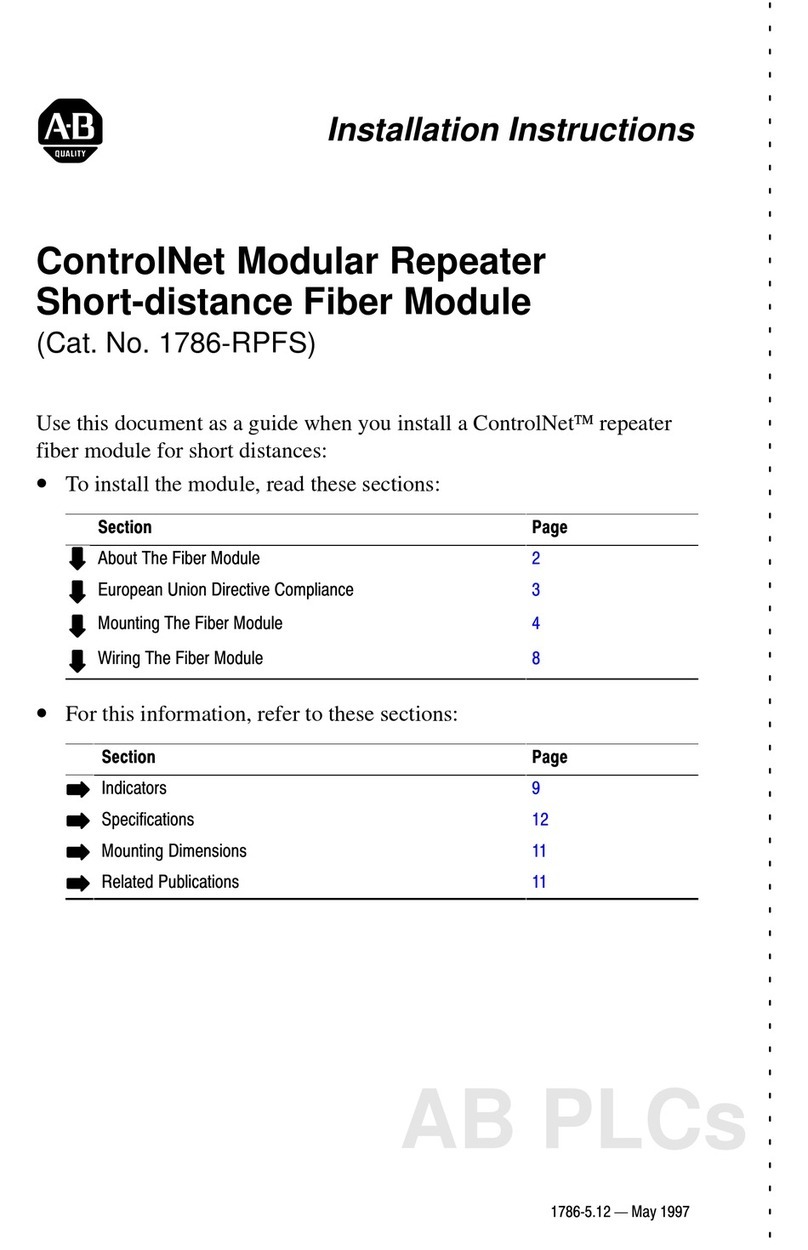
Allen-Bradley
Allen-Bradley ControlNet 1786-RPFS installation instructions

Olympus
Olympus CELON ELITE ESG-200 Quick reference guide
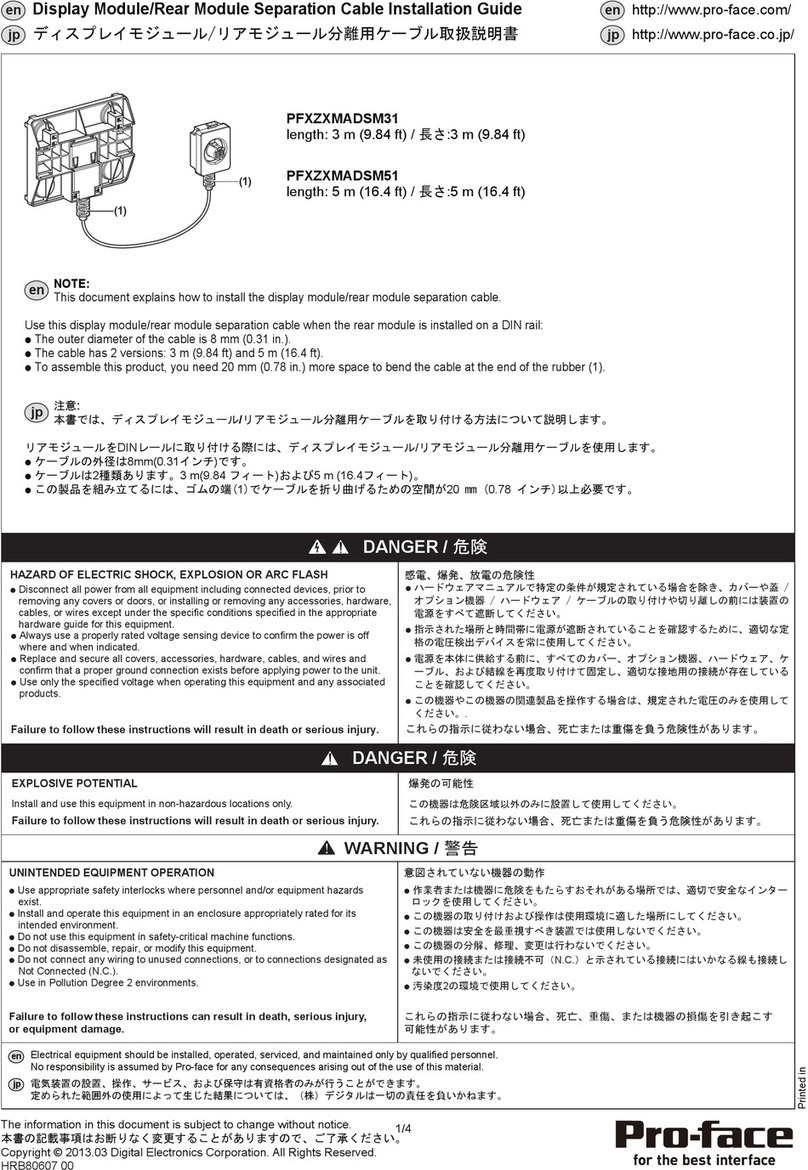
Pro-face
Pro-face PFXZXMADSM31 installation guide
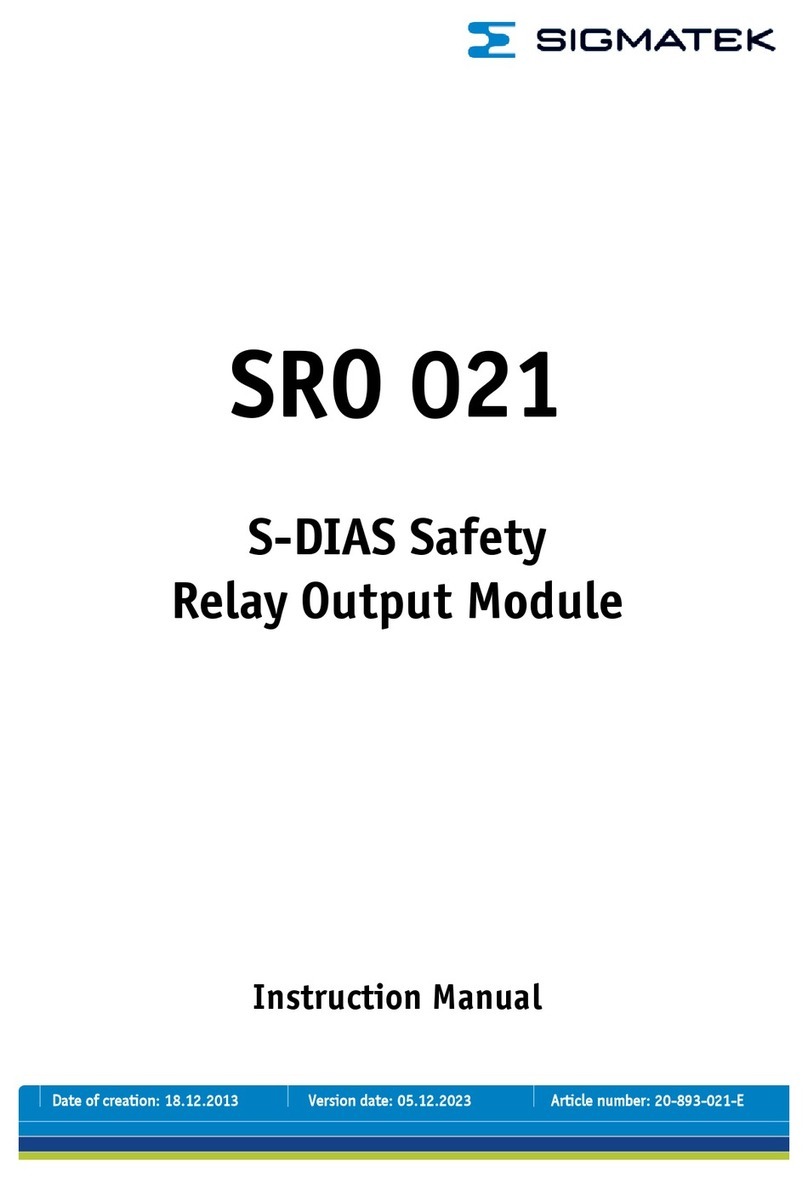
SIGMA TEK
SIGMA TEK SRO 021 instruction manual
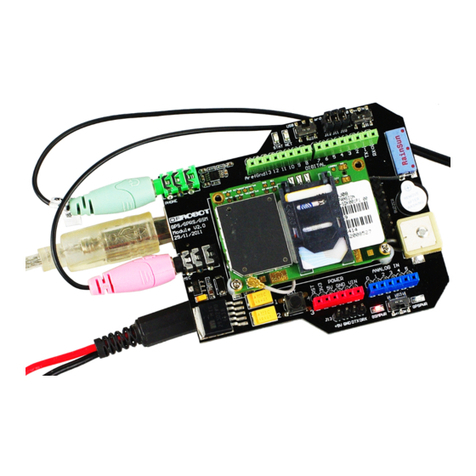
DF ROBOT
DF ROBOT TEL0051 manual
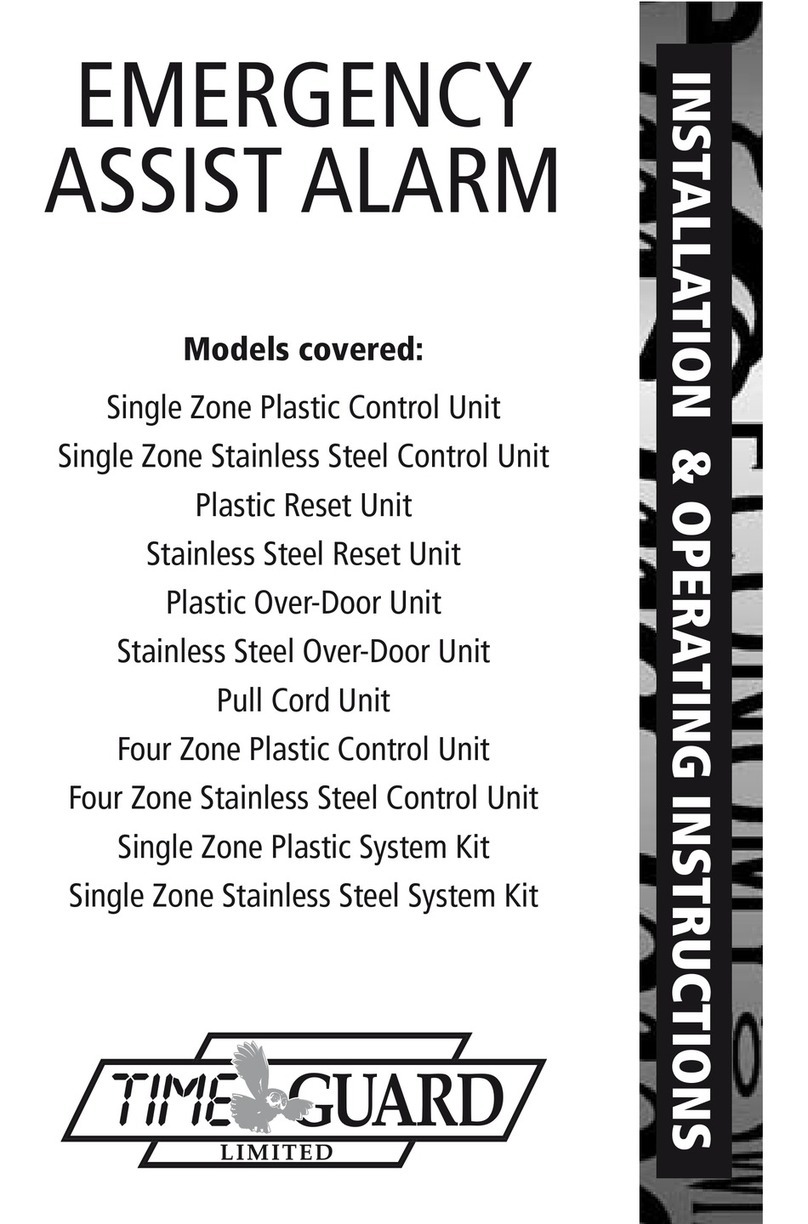
Timeguard
Timeguard EACP1PR operating instructions

